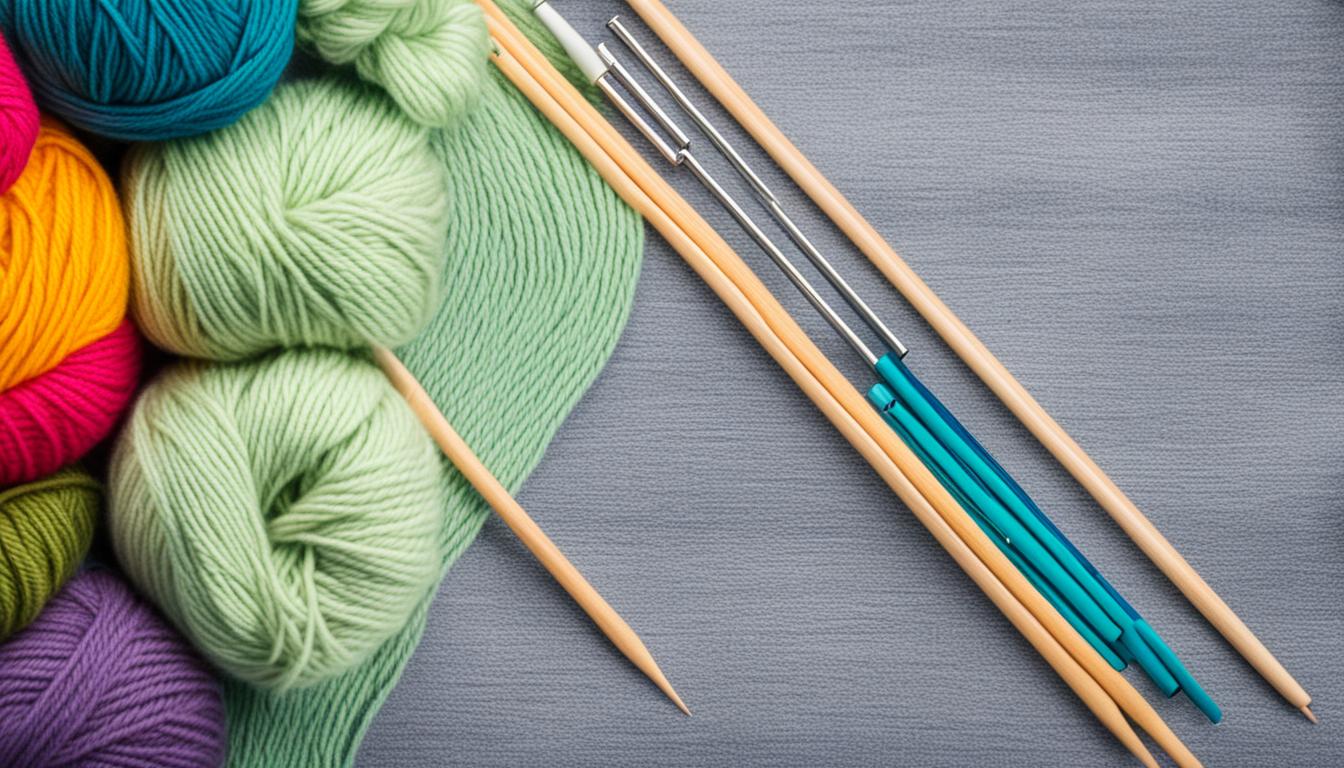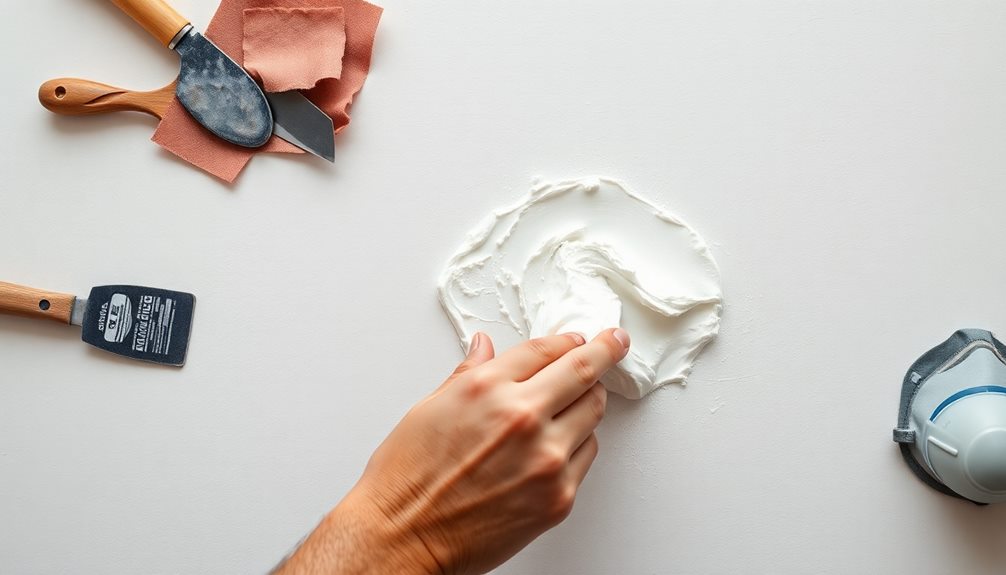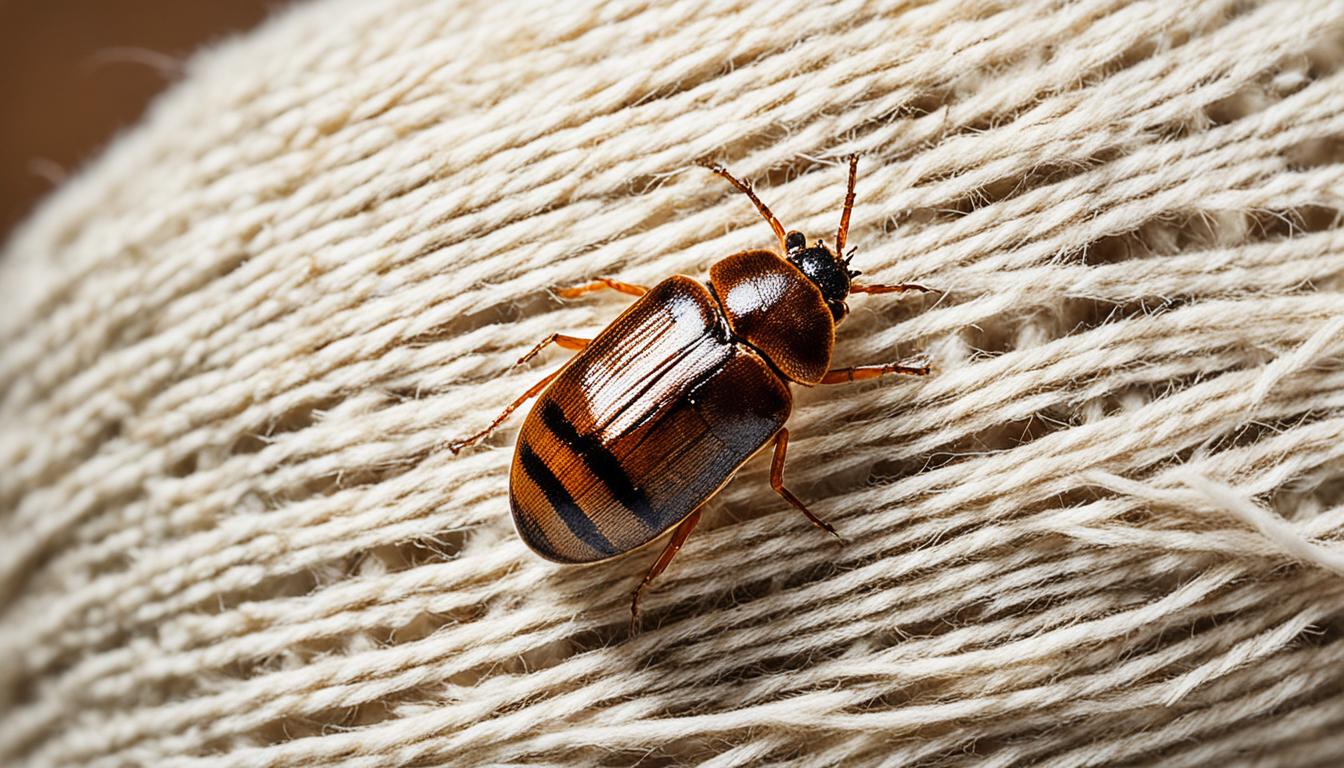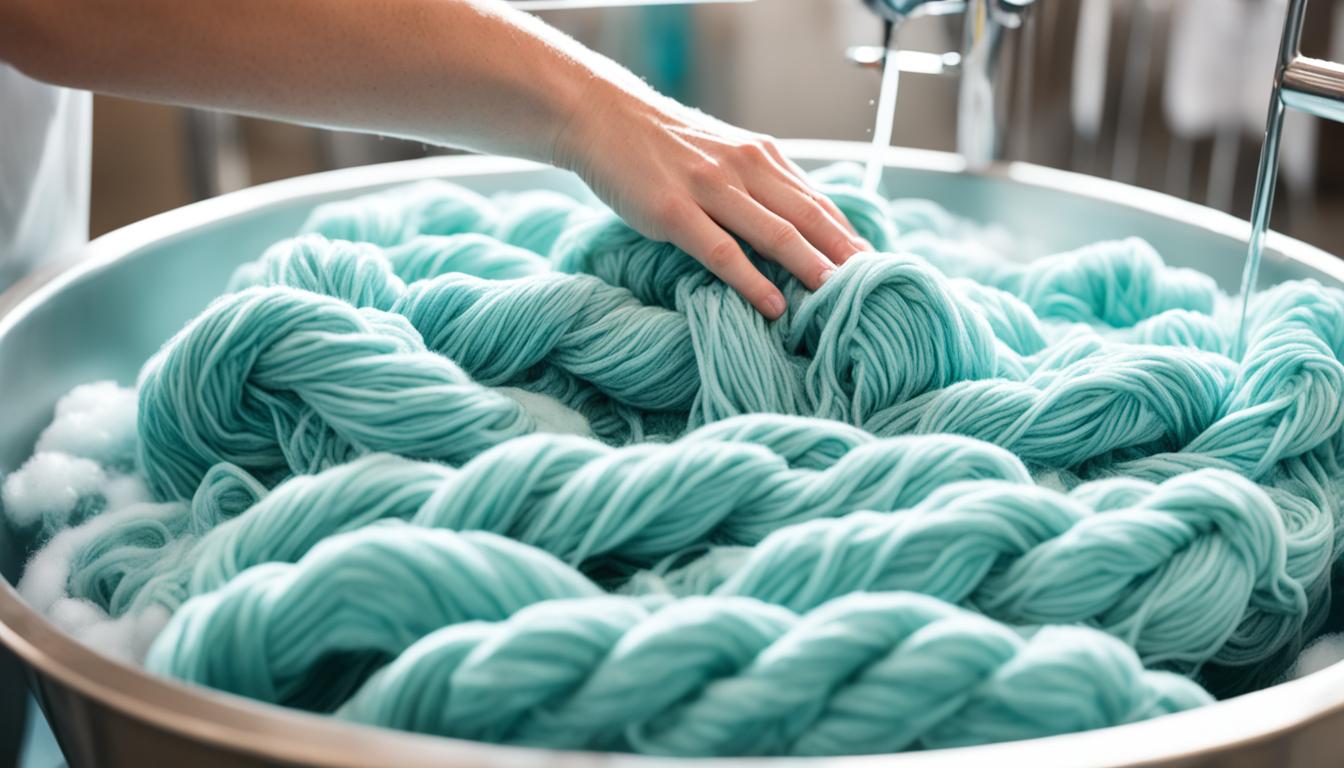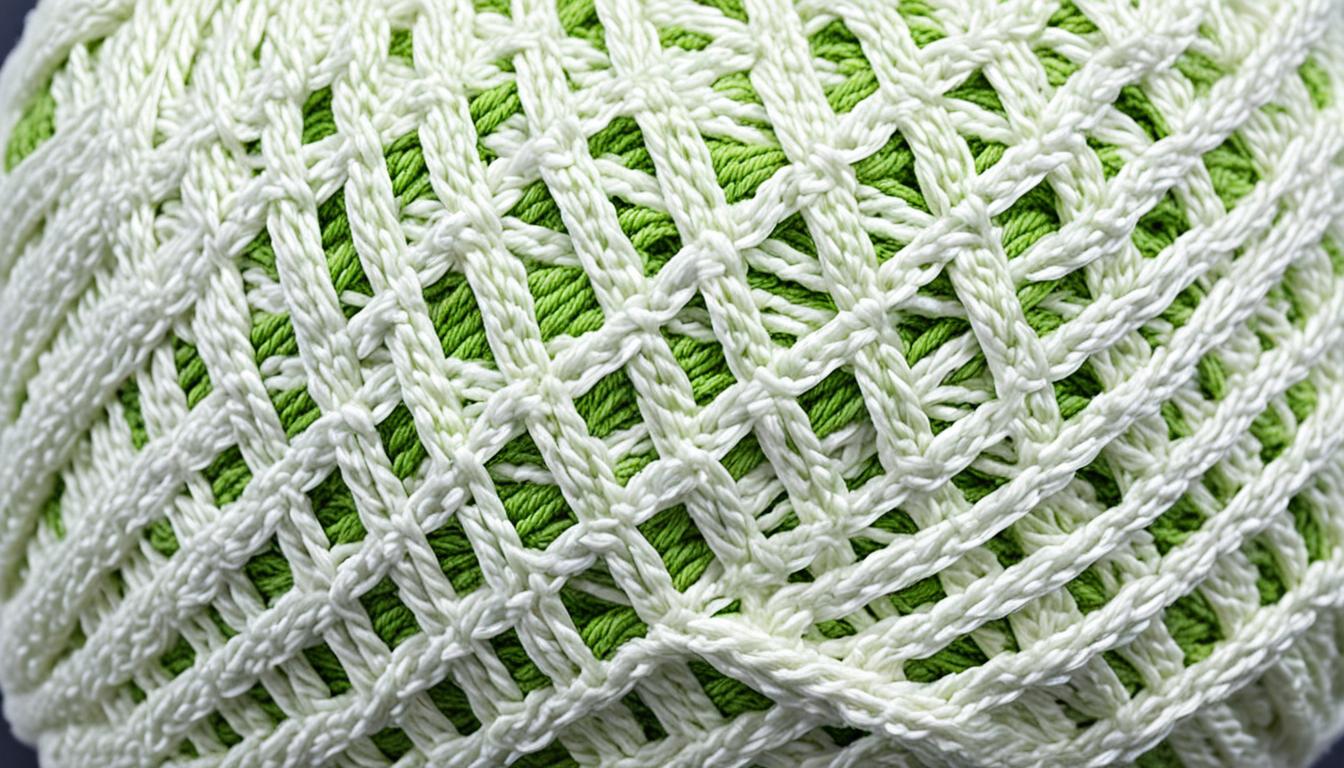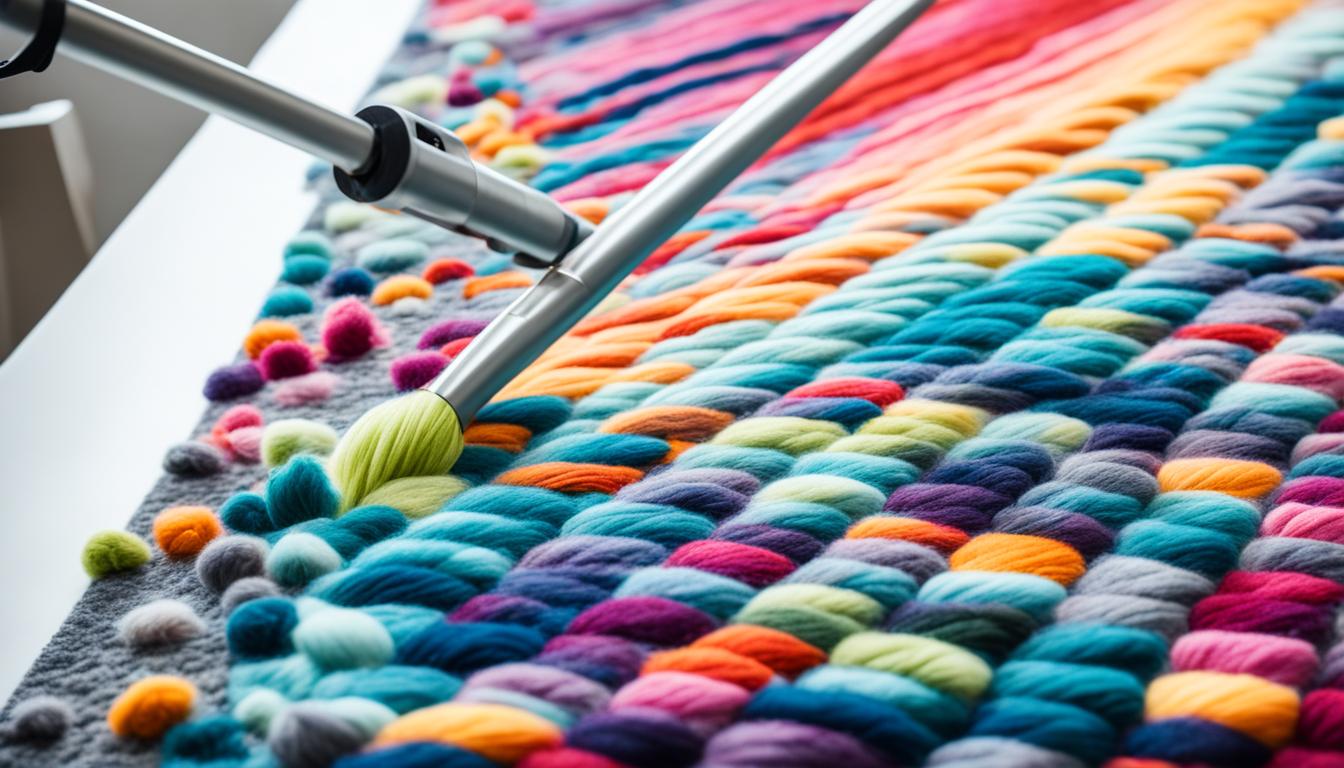When it comes to knitting socks, selecting the proper yarn is essential. We all desire socks that are not only durable but also offer optimal comfort. But what type of yarn is ideal for socks? Is there a particular kind that excels in both longevity and comfort? Let’s uncover the mysteries of sock yarn and find the ideal option for your knitting endeavors!
Key Takeaways:
- Choosing the right sock yarn is essential for durability and comfort.
- Fiber content, yarn weight, and stitch definition are important factors to consider.
- Wool and cotton blends are popular choices for soft and resilient socks.
- Fingering weight yarn is ideal for thin and comfortable socks.
- Recommended sock yarn brands include KnitPicks Hawthorne and Patons Kroy Socks.
Factors to Consider When Choosing Sock Yarn
Before selecting a sock yarn, we need to take into account several factors to ensure the perfect choice for our knitting project. When considering the socks’ purpose, it’s crucial to think about how they will be used. If you plan to make cozy boot socks for lounging indoors, thicker yarn weights like worsted or bulky may be the way to go. On the other hand, if your socks are meant to be worn inside shoes, opting for fingering weight yarns that are thinner and won’t make the shoes too tight is a better option.
In addition to the sock’s purpose, the fiber content of the yarn plays a significant role in the socks’ comfort. Wool and cotton are two excellent options known for their softness and ability to keep feet cozy. Wool yarn provides natural elasticity, ensuring the socks maintain their shape and fit snugly. Cotton, on the other hand, offers breathability and absorbs moisture, making it ideal for warmer weather.
By considering these factors, such as the purpose of the socks and the fiber content, we can choose sock yarn that meets our specific needs and preferences.
“The perfect sock yarn requires careful consideration of factors such as the sock’s purpose and the fiber content.”
Factors to Consider When Choosing Sock Yarn
| Factor | Description |
|---|---|
| Purpose of the Socks | Determining whether the socks are for lounging indoors or wearing inside shoes helps determine the appropriate yarn weight. |
| Fiber Content | Choosing between animal fibers like wool or plant fibers like cotton, based on desired softness, warmth, and breathability. |
Fiber Content for Sock Yarn
When it comes to knitting socks, the fiber content of the yarn is crucial for achieving both comfort and durability. Two popular options for sock yarn are wool and cotton. Let’s take a closer look at each:
Wool Sock Yarn
Wool is a fantastic choice for sock knitting due to its softness, elasticity, and ability to retain its shape over time. When shopping for wool sock yarn, look for options specifically labeled as “sock yarn” to ensure they are suitable for the task at hand. Additionally, consider blends that include nylon, as this adds extra elasticity and durability to the yarn, making your socks longer-lasting and resilient against wear and tear.
With its natural insulating properties, wool keeps your feet warm in colder weather while allowing breathability during hotter months. Its elastic nature ensures that your socks will snugly fit and comfortably stay in place. Wool sock yarn is available in a wide range of colors, allowing you to create socks that are not only functional but also aesthetically pleasing.
Cotton Sock Yarn
Cotton is another suitable fiber for sock knitting, favored for its breathability and lightweight feel. However, pure cotton yarn may lose its shape over time, so it’s beneficial to look for blends that incorporate elastic fibers to maintain the sock’s structure and prevent sagging. Cotton sock yarn can be an excellent choice for warm-weather socks or for those with allergies or sensitivities to wool.
When using cotton sock yarn, keep in mind that it may not have the same elasticity as wool. While cotton provides a breathable and moisture-wicking option, it may not offer as much stretch and recovery as wool. Consider this factor when determining the fiber content that best suits your sock knitting needs.
Overall, both wool and cotton sock yarn have their advantages and considerations. Wool provides elasticity, comfort, and excellent shape retention, while cotton offers breathability and a lightweight feel. When selecting sock yarn, consider your preferences, the intended use of the socks, and the climate in which they will be worn.
Next, we’ll explore the importance of durability and care when it comes to sock yarn.
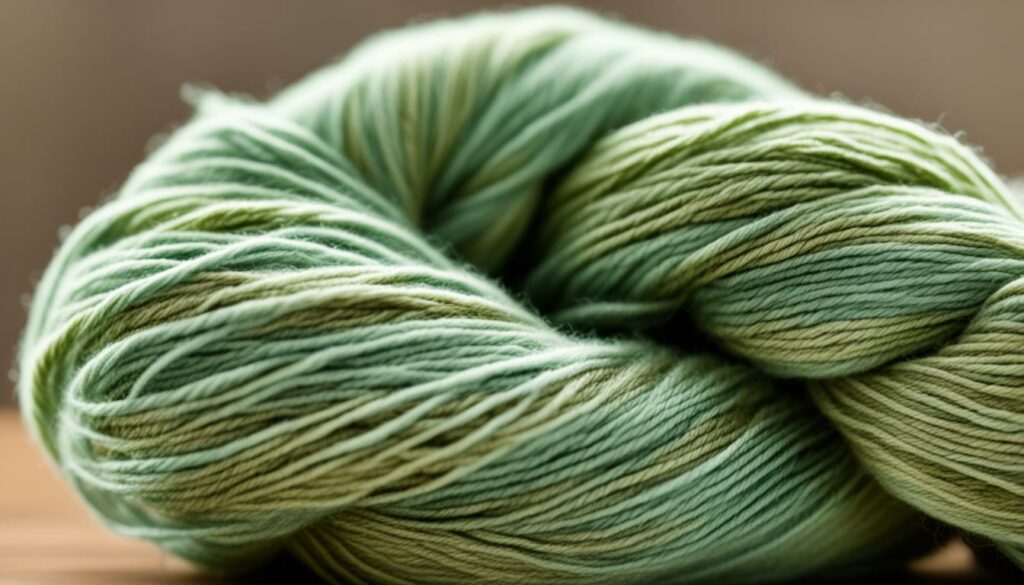
Durability and Care
When it comes to choosing the perfect yarn for knitting socks, durability and care are key considerations. Socks are subjected to constant wear and tear, so it’s essential to select a yarn that can withstand the demands of daily use and frequent washing.
One of the most important factors for sock yarn durability is its ability to resist abrasion. Look for yarns that are specifically designed to be abrasion-resistant, ensuring they can withstand friction without pilling or felting. This will help your socks maintain their appearance and structural integrity over time.
Elasticity is another crucial quality to look for in sock yarn. Elasticity ensures that your socks stay in place and don’t sag or crumple up inside your shoes. This is especially important if you’re knitting socks for active wear or for activities that involve a lot of walking or running.
In addition to durability, caring for your socks should also be convenient and hassle-free. Choosing machine-washable sock yarn allows for easy cleaning and maintenance. Simply toss your socks in the washing machine with the rest of your laundry, and they’ll come out fresh and clean.
An important consideration for sock yarn care is moisture-wicking properties. Look for yarns that have moisture-wicking capabilities, which will help keep your feet dry and comfortable throughout the day. Moisture-wicking yarns are especially beneficial if you’re prone to sweaty feet or if you live in a humid climate.
“Choosing a durable sock yarn that is easy to care for ensures that your handmade socks will last for years to come while maintaining their appearance and performance.”
By selecting sock yarn that is both durable and easy to care for, you can enjoy wearing your handmade socks with confidence and have them last for years to come. Now, let’s explore some recommended sock yarn brands that offer exceptional durability and convenience for sock knitting enthusiasts.
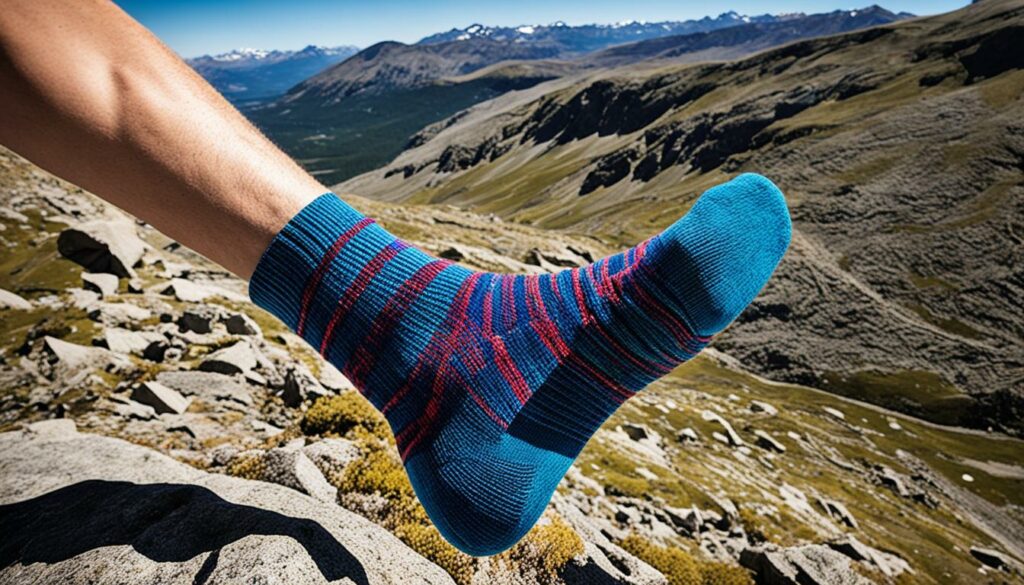
Yarn Weight for Socks
When knitting socks, the weight of the yarn is an important consideration that can greatly impact the final outcome of your project. Different yarn weights offer varying characteristics and suitability for various sock knitting purposes.
Fingering Weight Yarn
Fingering weight yarn, also known as super fine or sock yarn, is a popular choice for knitting socks. It is thin and durable, making it ideal for creating comfortable and well-fitted socks. Fingering weight yarn offers excellent stitch definition, allowing intricate patterns and details to shine through. The lightweight nature of this yarn makes it perfect for everyday wear.
Sport Weight Yarn
If you prefer a slightly thicker option for your socks, sport weight yarn can be an excellent choice. Sport weight yarn provides a bit more warmth and cushioning while still maintaining a comfortable fit inside shoes. It strikes a balance between thickness and breathability, making it suitable for various seasons.
DK Weight Yarn
Another option for sock knitting is DK weight yarn. This yarn weight offers a slightly thicker and more substantial feel compared to fingering weight and sport weight yarns. It provides additional warmth and is particularly suitable for knitting cozy socks or boot socks.
When deciding on the yarn weight for your socks, consider factors such as the intended purpose of the socks, the desired level of breathability, and personal preferences. Each yarn weight has its own unique qualities, so it’s essential to choose the one that best suits your sock knitting needs.
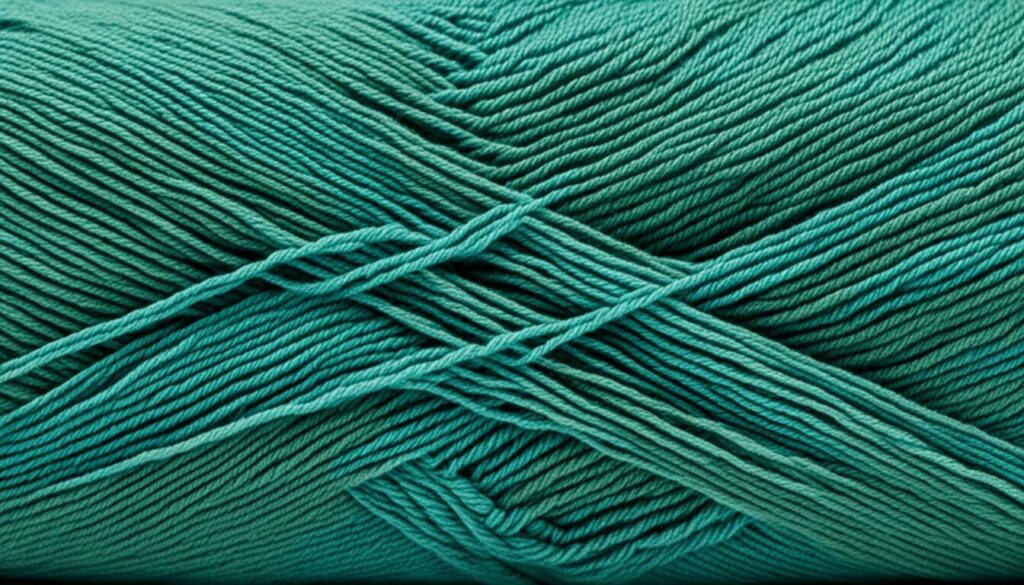
| Yarn Weight | Description | Suitable for |
|---|---|---|
| Fingering Weight Yarn | Thin and lightweight | Everyday wear, detailed patterns |
| Sport Weight Yarn | Slightly thicker and more cushioned | All-season socks, added warmth |
| DK Weight Yarn | Thicker and more substantial | Cozy socks, boot socks |
Recommended Sock Yarn Brands
When it comes to knitting socks, quality yarn is essential for achieving comfortable and long-lasting results. We’ve compiled a list of top recommended sock yarn brands that guarantee durability, softness, and a wide range of color options to suit your knitting projects. Whether you’re a seasoned sock knitter or just starting out, these brands are sure to deliver exceptional results.
1. KnitPicks Hawthorne
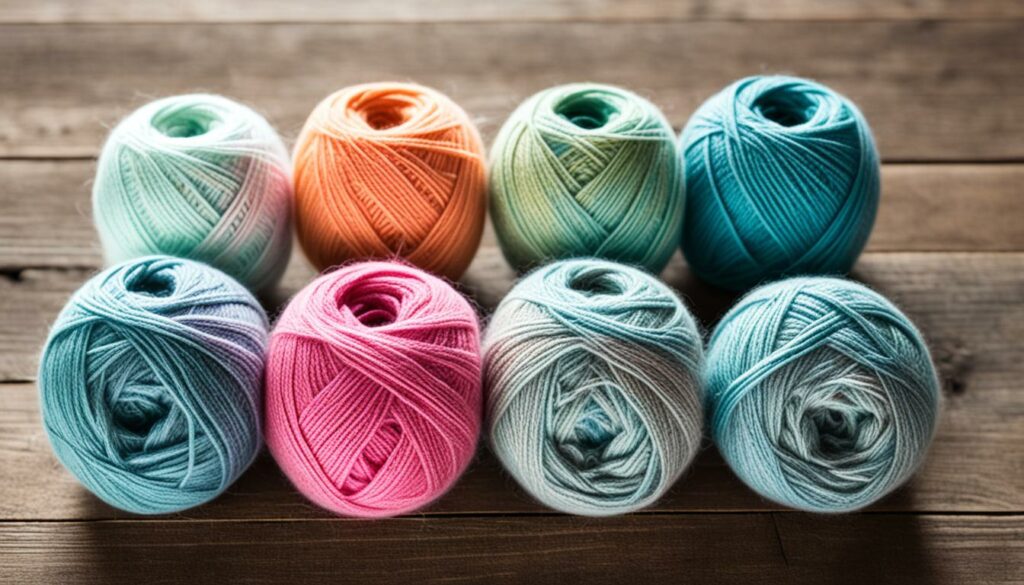
KnitPicks Hawthorne is our top recommendation for sock knitting due to its outstanding durability and softening properties. This yarn is made from a blend of 80% superwash fine highland wool and 20% polyamide for added strength and stretch. With a wide variety of vibrant colors, KnitPicks Hawthorne allows you to create beautiful and comfortable socks that will stand the test of time.
2. KnitPicks Stroll, Stroll Tweed, and Stroll Tonal
If you’re looking for affordable yet reliable options, KnitPicks Stroll, Stroll Tweed, and Stroll Tonal are excellent choices. These yarns are made from a blend of 75% superwash Merino wool and 25% nylon, providing both softness and durability. Stroll Tweed adds a touch of speckled texture to your socks, while Stroll Tonal offers a gradient effect for a unique look. With a wide array of colors, you’ll find the perfect combination for your next sock knitting project.
3. Patons Kroy Socks
Another great option for sock knitting is Patons Kroy Socks. This yarn is available in various colors and is crafted from a blend of 75% washable wool and 25% nylon. It offers excellent stitch definition and is known for its durability and comfort. Patons Kroy Socks is widely available at many retailers, making it easily accessible for sock knitters of all levels.
When it comes to choosing sock yarn, quality and reliability are key. These recommended brands offer the perfect combination of durability, softness, and color options to bring your sock knitting projects to life. Explore their offerings and get ready to create beautiful and comfortable socks that will keep your feet happy for years to come.
Yarns to Avoid for Socks
When it comes to knitting socks, not all yarns are created equal. To ensure the longevity and durability of your knitted socks, it’s essential to avoid using certain yarns that are unsuitable for this purpose. Here are some yarns that we recommend avoiding:
- Yarns Not Labeled as Sock Yarn: It’s best to choose yarns that are specifically labeled as “sock yarn.” These yarns are specially designed to withstand the demands of sock knitting, providing the necessary strength and durability. Using yarns that are not designated for socks may result in socks that wear out quickly or lose their shape.
- Yarns without Wool and Nylon Blend: Wool and nylon blends are ideal for sock knitting as they offer both elasticity and durability. Yarns made solely from fibers such as merino, silk, bamboo, angora, cashmere, or alpaca may not hold up well to the rigors of sock wearing and washing. Look for yarns that combine wool and nylon for the best results.
- Cotton-Blend Yarns: While cotton is a popular choice for its softness, it can be less suitable for socks. Cotton-blend yarns can be more fragile and prone to losing their shape over time. If you do choose a cotton-blend yarn, look for one that incorporates elastic fibers to enhance durability.
By avoiding these yarns, you’ll be able to knit socks that withstand the test of time and provide optimal comfort. Now, let’s move on to some tips for blocking your completed socks to give them the perfect finish.
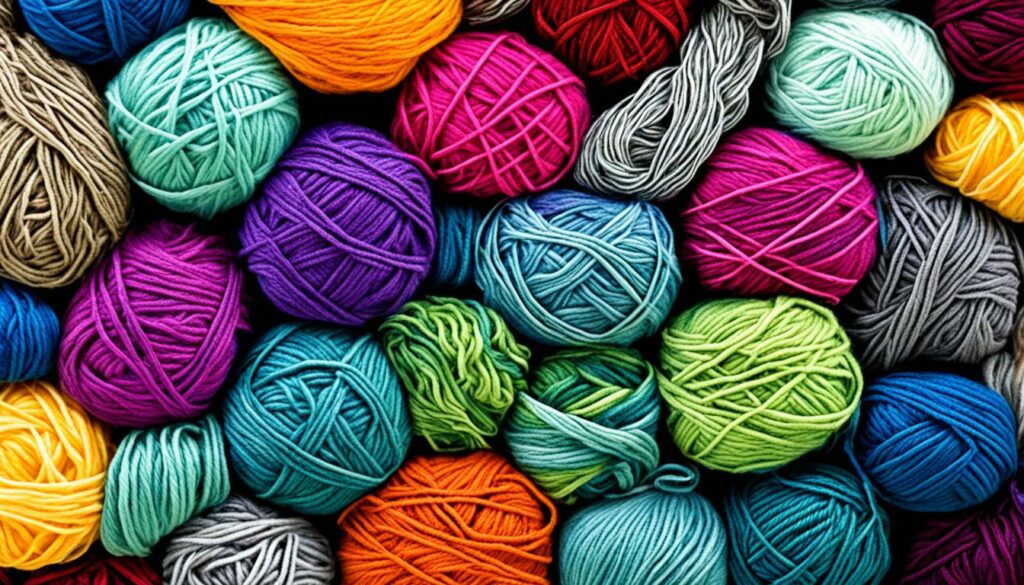
Tips for Blocking Socks
Blocking your finished socks is an essential step in ensuring they look their best. Here are some tips for blocking socks:
- Use a no-rinse wool wash or gentle detergent: Prepare a bath for your socks using a no-rinse wool wash or a gentle detergent. Allow the socks to soak for about 15 minutes, gently squeezing out any excess water.
- Place the socks flat on a towel: Lay a clean towel on a flat surface and place the soaked socks on top. Gently reshape them to their intended size and form.
- Use sock blockers: Slip the socks onto sock blockers to help them maintain their shape while drying. Sock blockers are specially designed tools that mimic the shape and size of a foot, allowing the socks to dry evenly without stretching or distorting.
- Avoid snagging: To prevent snagging, consider using plastic sock blockers instead of wooden ones. The smooth surface of plastic blockers reduces the risk of fibers getting caught and causing damage to your socks.
Following these tips will result in beautifully blocked socks that showcase your knitting skills. Now that your socks are ready to wear, let’s explore some recommended sock yarns for specific purposes.
Tips for Blocking Socks
Blocking socks is a crucial step in completing your knitted project. Not only does it help the socks maintain their shape and size, but it also enhances the overall appearance and fit. Here are some useful tips for blocking socks:
- Preparation: Before blocking your socks, make sure you have a clean and flat surface to work on. Lay a towel or blocking mat to protect your surface and absorb any excess moisture.
- Soaking: Fill a basin or sink with lukewarm water and add a no-rinse wool wash or a gentle detergent. Place the socks in the water and gently submerge them. Allow the socks to soak for about 15-30 minutes, or according to the instructions on the wool wash.
- Gently Squeeze: After soaking, remove the socks from the water and gently squeeze out the excess water. Avoid wringing or twisting the socks, as this can damage the fibers.
- Flat Drying: Lay a clean towel on a flat surface and place the wet socks on top. Gently shape the socks to their desired size and smooth out any wrinkles or lumps. Ensure that the socks are in their correct shape and the stitches are even.
- Blocking Aids: Consider using sock blockers or forms to help the socks maintain their shape while drying. Plastic sock blockers are lightweight, easy to use, and prevent snagging. Slip the wet socks onto the blockers, adjusting them to fit snugly.
- Patience: Allow the socks to dry completely before removing them from the blocking aids. This usually takes 24-48 hours, depending on the fiber content and humidity in your environment. Avoid rushing the drying process, as your socks may lose their shape.
If you’re looking for visual guidance on blocking socks, check out the tutorial provided below:
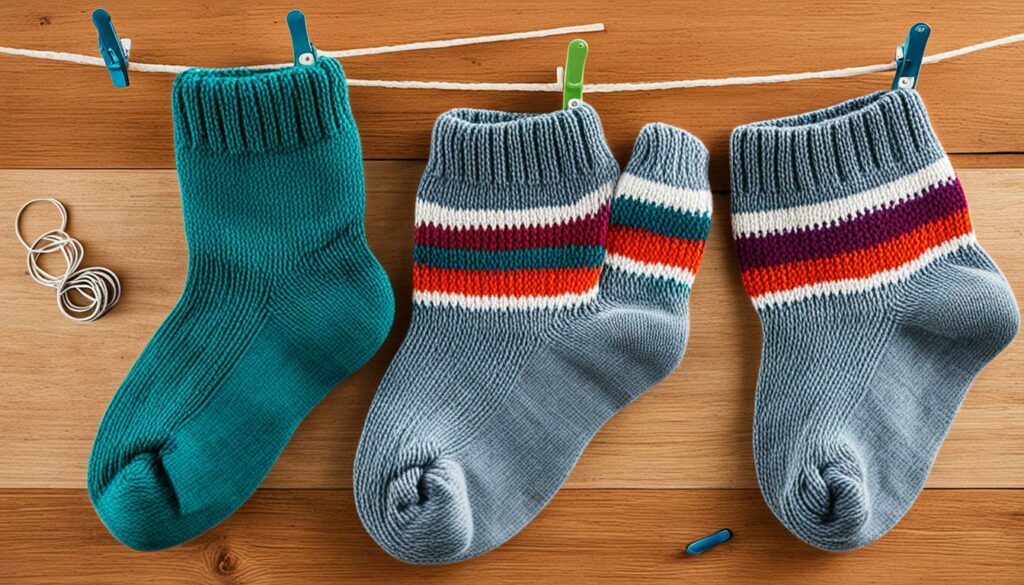
Recommended Sock Yarns for Specific Purposes
Choosing the right sock yarn for specific purposes can greatly enhance your knitting experience. Whether you’re looking for lightweight and breathable options for summer socks or cozy and warm yarns for winter socks, we have you covered. Here are our top recommendations:
Summer Sock Yarn
For breathable and lightweight summer socks, fingering weight yarns are an excellent choice. They provide a comfortable fit and are perfect for keeping your feet cool in warmer weather. Two highly recommended options for everyday wear are Regia and H&W Comfort Wolle. These yarns offer a blend of durability, softness, and breathability, ensuring that your summer socks will be both comfortable and long-lasting.
If you’re looking to add a touch of luxury to your summer sock knitting projects, Woolen Rabbit Pearl is a fantastic choice. This yarn combines the softness of merino wool with the luster of silk, resulting in socks that are not only comfortable but also visually stunning. Woolen Rabbit Pearl is ideal for special occasions or as a thoughtful gift for a loved one.
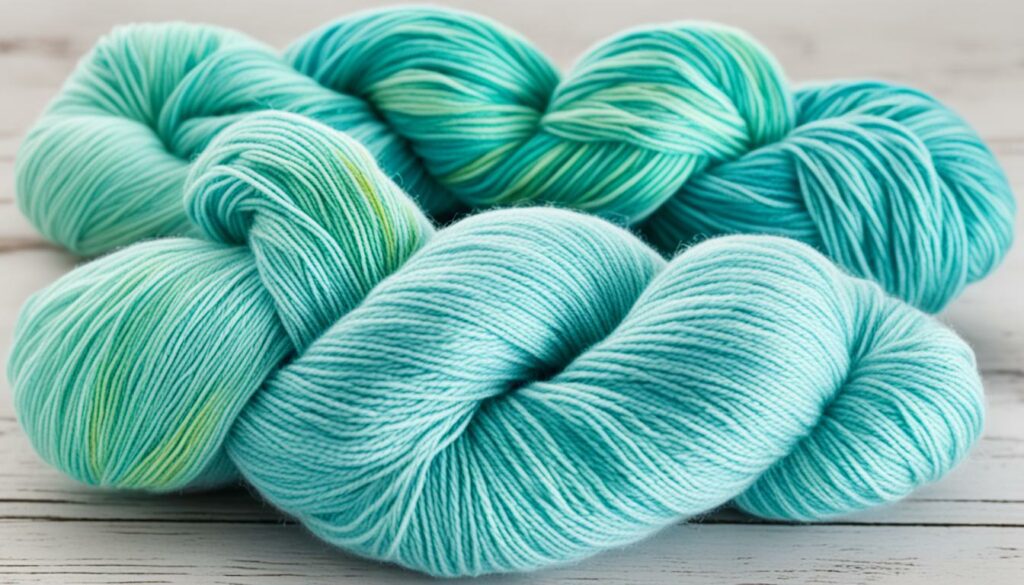
Winter Sock Yarn
When it comes to winter socks, thicker yarns provide the warmth and coziness needed to keep your feet comfortable in cold weather. DK weight and worsted weight yarns are the go-to choices for winter sock knitting.
DK weight yarn: For winter socks that strike a balance between warmth and breathability, consider using DK weight yarn. It provides a slightly thicker option compared to fingering weight yarn, making it perfect for cozy socks. Look for brands that offer a blend of natural fibers such as wool for warmth and nylon for added durability.
Worsted weight yarn: When maximum warmth is your priority, worsted weight yarn is the way to go. This thick and fluffy yarn creates socks that are perfect for cold winter days and nights. Choose yarns that offer excellent stitch definition and are made from warm fibers like wool or alpaca.
With these recommended sock yarns for specific purposes, you can confidently knit socks that meet your seasonal needs. Whether you’re enjoying the summer breeze or bundling up in winter, your feet will stay comfortable and stylish. Happy knitting!
Review of Sock Yarn Brands
When it comes to knitting socks, the choice of yarn brand can make a significant difference in the final outcome. In this section, we will provide an overview of various sock yarn brands, highlighting their strengths, weaknesses, and our personal reviews.
KnitPicks
KnitPicks offers a range of sock yarn options that are known for their durability and affordability. Their Hawthorne line is particularly commendable, with a softening effect that makes it perfect for comfortable socks. The Stroll, Stroll Tweed, and Stroll Tonal collections also come highly recommended for their beautiful colors and reliable quality.
Patons
Patons Kroy Socks is another popular choice when it comes to sock yarn. This brand can be found at various retailers and offers a good balance of quality and affordability. Their yarns are known for their longevity and excellent stitch definition, making them a great option for sock knitting projects.
“KnitPicks and Patons are two top contenders in the sock yarn market. They offer a diverse range of options with different color selections and fiber blends.” – Our Honest Review
It’s important to note that the ratings and reviews provided are highly subjective and based on our personal preferences. However, we considered factors such as tightness, stretch, longevity, and color options to evaluate each brand.
To gain a comprehensive understanding of the various sock yarn brands, refer to the table below:
| Brand | Strengths | Weaknesses | Rating |
|---|---|---|---|
| KnitPicks Hawthorne | Durable, softening effect | Limited color range | 4.5/5 |
| KnitPicks Stroll | Beautiful colors, reliable quality | Less elastic | 4/5 |
| Patons Kroy Socks | Longevity, excellent stitch definition | Colors may fade over time | 4/5 |
Yarn Weight Considerations
When it comes to knitting socks, choosing the right yarn weight is essential for achieving the desired look and feel. Different yarn weights offer varying levels of thickness, making them suitable for different types of socks. Let’s explore the yarn weight considerations to help you make an informed decision.
Fingering Weight Yarn
Fingering weight yarn, also known as super fine or sock yarn, is the go-to choice for thin and comfortable socks. It creates a lightweight fabric that fits snugly and feels soft against the skin. Fingering weight yarn also allows for excellent stitch definition, making it ideal for showcasing intricate patterns or colorwork. Brands like Malabrigo Sock and Madelinetosh Tosh Merino Light offer a wide range of beautiful fingering weight yarn options for sock knitting.
Sport Weight Yarn and DK Weight Yarn
For those who prefer slightly thicker socks, sport weight yarn and DK weight yarn are great alternatives. These yarn weights provide a bit more warmth and cushioning while still maintaining a comfortable fit. Cascade Heritage Sport and Berroco Ultra Wool DK are excellent choices for durable and cozy socks. They offer a balance between thickness and breathability, ensuring that your feet stay comfortable in a variety of climates.
Worsted Weight Yarn
If you’re looking to knit cozy boot socks or socks for colder seasons, worsted weight yarn is a fantastic option. The thicker yarn creates warm and cushioned socks that are perfect for snuggling up at home. Brands like Plymouth Yarn Encore and Lion Brand Wool-Ease provide a variety of worsted weight yarns in different colors and blends, allowing you to create socks that match your style and keep your feet toasty.
Considerations for Yarn Weight Selection
When choosing the appropriate yarn weight for your socks, consider the intended purpose and season of the socks. Fingering weight yarn is ideal for everyday wear and warmer climates, while sport weight yarn and DK weight yarn offer a bit more versatility in terms of temperature regulation. If you’re aiming for thick and cozy socks to keep your feet warm during colder months, worsted weight yarn is the way to go.
It’s important to note that the yarn weight you choose will also affect the gauge and needle size required for your project. Be sure to check the recommendations on the yarn label and swatch before starting your socks to ensure proper fit and stitch quality.
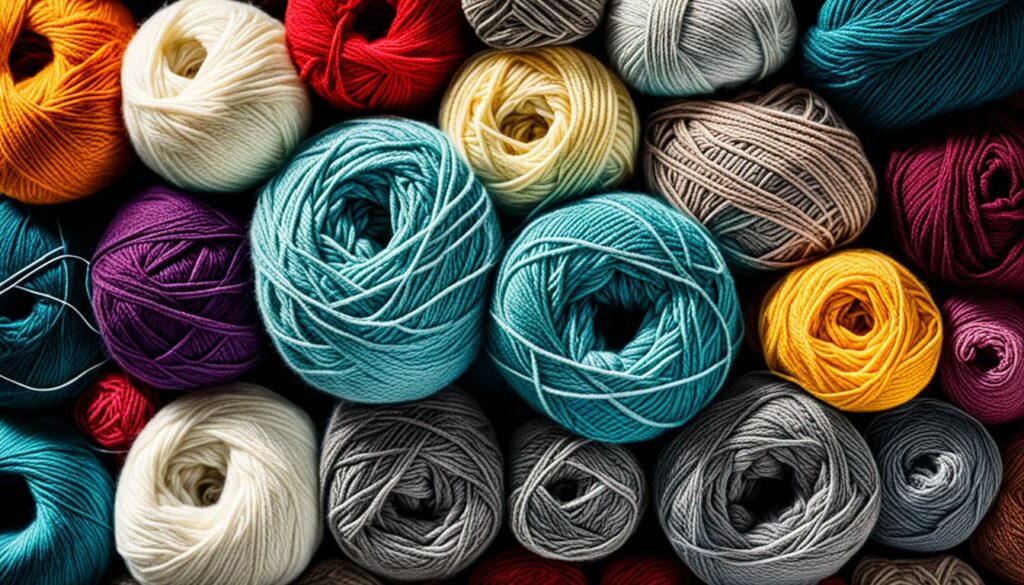
| Yarn Weight | Thickness | Recommended Needle Size (US) | Recommended Gauge (Stitches per Inch) |
|---|---|---|---|
| Fingering Weight | Super fine | 1 – 3 | 7 – 8 |
| Sport Weight | Fine | 3 – 5 | 5 – 6 |
| DK Weight | Light | 5 – 7 | 5 – 6 |
| Worsted Weight | Medium | 7 – 9 | 4 – 5 |
Conclusion
After considering various factors, we have reached the conclusion that when it comes to knitting socks, prioritizing durability, comfort, and personal preferences is key. For the best results, we recommend choosing wool and cotton blends that are specifically labeled as sock yarn. These blends offer softness, elasticity, and excellent resistance to wear and tear.
When selecting sock yarn, it’s important to consider the fiber content, yarn weight, and color options that suit your preferences. Wool provides warmth and elasticity, while cotton offers breathability. Fingering weight yarn is ideal for thin and comfortable socks, while sport weight yarn and DK weight yarn provide a slightly thicker option.
Remember, the perfect yarn for your sock knitting projects may vary depending on your specific needs. Take the time to explore different brands and blends to find the yarn that best suits your knitting style and sock requirements. So go ahead, experiment, and enjoy the process of creating beautiful and comfortable socks. Happy knitting!
